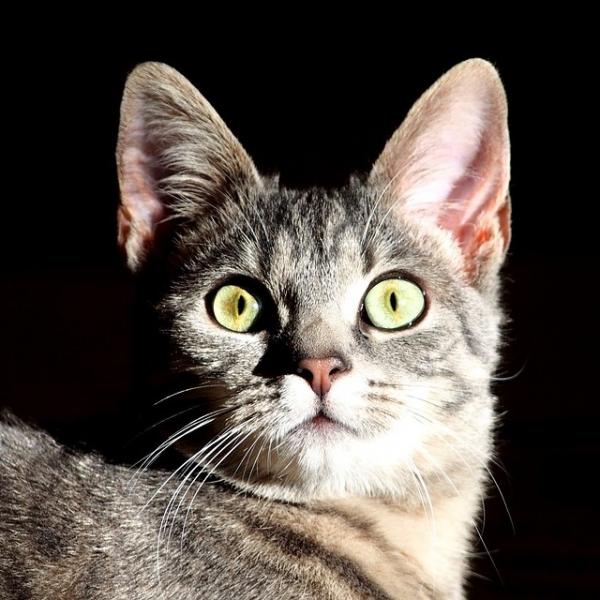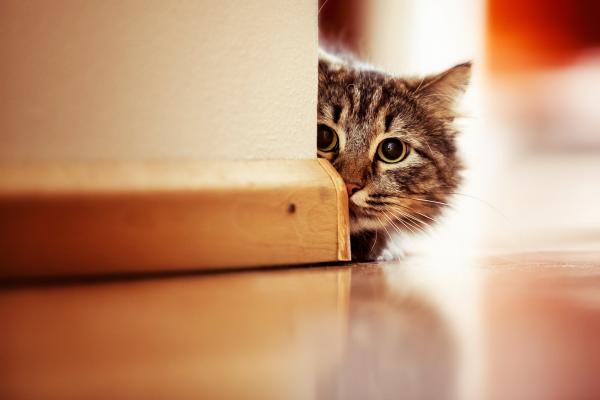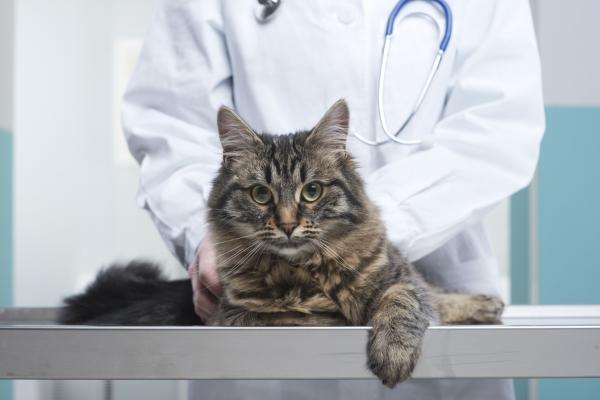Feline hyperesthesia – Symptoms and treatment

It is not a secret that cats are extremely careful animals with their hygiene, so it is possible to affirm that the second activity that they perform during a longer time in the day, apart from sleeping, is grooming their fur. However, when cleaning habits are compulsive, and in addition to grooming it happens to be hurt, then it is a clear sign that something is not right and that you should go to the veterinarian as soon as possible.
La feline hyperesthesia could be one of the causes, so it is necessary that you know your symptoms and treatment to know how to deal with that disorder. Keep reading and discover how to know if your cat has hyperesthesia.
What is feline hyperesthesia?
It is a syndrome that rarely affects cats, the product of a alteration of the neuromuscular system, which causes the skin on the back to curl or lift from the shoulder area to the tail. When this happens, the affected area becomes very sensitive, causing the cat to believe that someone is chasing him or something has entered his skin.
This disorder is very desperate for the feline, because he comes to lick and bite to try to escape from what he believes is chasing or harassing him. Hyperesthesia is manifested by episodes lasting several minutes, during which the cat presents a series of symptoms; When the episode ends, his behavior is completely normal again.
Due to its characteristics, this disease receives several names, such as nervous cat syndrome and undulating skin syndrome, compared to other more technical ones such as neurodermatitis and neuritis.

What are the causes of feline hyperesthesia?
Research has not yet been able to determine with certainty what unleashes this strange syndrome. Some claim that in some races, such as oriental cats, stress is capable of initiating this disorder, especially when it is caused by a constant state of nervousness, product of loud noises or an atmosphere too tense.
Other studies claim that it is related to epilepsy, since many cats, during episodes of hyperesthesia, also convulse. Both diseases have to do with a disturbance of the cerebral electrical impulses, so many support this theory.
Some skin diseases, such as that caused by flea bites, infections and food deficiencies, may cause hyperesthesia. In addition, obsessive-compulsive disorder has also been observed in many of the cats that suffer from this disease, so it is believed that the appearance of one is related to the other.
Symptoms of feline hyperesthesia
The main symptom during episodes of hyperesthesia is that the cat begins to licking the back and tail area repetitively, even becoming self-mutilated in order to fight against the unpleasant sensation. This is because the skin ripples.
He will try not only to bite, but also to attack his tail, because he does not recognize it as his own. If you try to stroke your back during the episodes, it will show greater sensitivity in the area, and may even adopt a hostile attitude to you.
The tics, the loss of fur In places where the skin rises and wounds are very common, especially by the bites that the feline does to itself. During the episodes, it is also common for the cat to run around and jump around the house with fear, as if something was chasing him, giving the impression that he has hallucinations. He may vocalize loudly and his pupils dilate.

How is the diagnosis made?
Being a rare disease whose causes are not yet defined, the main diagnosis consists of rule out other possible diseases. The first thing is to see if the feline’s grooming habits have changed, becoming obsessive or causing injuries.
The next step is to take the kitten to the vet. There, he will do the necessary tests to rule out skin diseases, brain disorders, problems in the thyroid or food, among others. Blood tests, x-rays, among other studies, will be necessary to determine if it is hyperesthesia or, on the contrary, if the problem is another.
Treatment of feline hyperesthesia
Unfortunately, there is no specific treatment for feline hyperesthesia. What is prescribed is to provide the cat with a Calm and calm atmosphere, reducing the chances of you experiencing nervousness. A relaxed place to sleep, the possibility of easily accessing your food and your sanitary bed, without anyone or anything bothering you, will diminish the episodes.
Sometimes, it is likely that required soothing, in addition to the medicines needed to heal possible wounds present in the skin. Similarly, a good diet and enough fresh water will provide the cat with all the nutrients it needs.

This article is merely informative, in .com we do not have the faculty to prescribe veterinary treatments or make any kind of diagnosis. We invite you to take your pet to the veterinarian in case of any type of condition or discomfort.
If you want to read more articles similar to Feline hyperesthesia – Symptoms and treatment, we recommend that you enter in our section of Other health problems.


